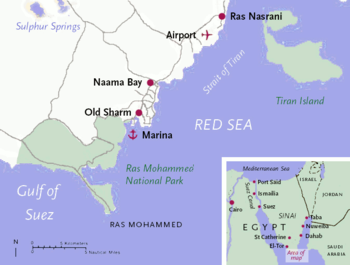Learning from Sharks
- jamie03066
- Jun 15, 2015
- 4 min read
Sharm el-Sheikh is located on the Egyptian Red Sea coast, at the southern tip of the Sinai Peninsula. (Photo credit: Wikipedia)
I guess it is because I started re-reading Peter Benchley’s masterpiece of pulp fiction, “Jaws” that my attention has been brought back to sharks. It is not difficult to find a documentary on these fascinating predators of the deep on one of the TV channels these days. Indeed, if your special interest is crime, Nazis or sharks then there is a never ending supply of TV programmes for you to watch. Despite there being a good number of interesting and informative programmes regarding the lives of sharks and their mysterious biology, many go down the sensationalist shark attack route. I have had my fill of junk non-fiction, so I generally steer clear of the tabloids of the small screen. However, one documentary in this latter category caught my attention due to a peculiar connection with animal training and what I coach at Clubb Chimera Martial Arts.
The programme in question was “Red Sea Jaws”. The title, as you can see, immediately evokes the sensationalist man-eater story of Benchley’s book and Spielberg’s film, and it isn’t the most scholarly of documentaries. Nevertheless, one of the theories put forward in the show was very interesting in relation to how certain training practices resulted in deadly unforeseen consequences. Training develops behaviour, good and bad. Experiences develop behaviours too. This is why I favour a ground-up method of teaching and coaching by creating activities rather just imparting techniques.
“Red Sea Jaws” explored the series of shark attacks on tourists that occurred in 2010 at the Sharm el-Sheikh resort in Egypt. Four people were attacked within minutes of each other and panic ensued. The tourist industry was critically hit and the beaches were closed until two different species of shark – an oceanic white-tip and a short-fin mako - were caught. Within a day of the beaches reopening a grandmother was killed off the same shoreline. Conservationists and divers had both declared that the two sharks that had been caught were not the one they had photographed, which had a distinctive notch on its dorsal fin. Nevertheless, experts confirmed that the bites and nature of attacks on the victims corresponded with the species of shark that had been caught. The notched-fin shark was never caught.
The consensus of opinion regarding why the attacks occurred are based on several contributory factors. Tourists feeding fish, which is prohibited, was said to have attracted the larger shark predators closer to shore. The illegal dumping of sheep carcasses that occurred around the time following the Muslim Eid festival was also cited as a probable cause. Adding to all this there was a distinctive rise in water temperature, which Egyptian authorities suggested came from underwater nuclear testing in the Gulf of Aqaba. However, what I found to be a fascinating possible explanation was the illegal feeding of sharks in the Sharm el-Sheikh area.
Apparently many diving experiences offer divers the opportunity to feed sharks. This is banned in the Red Sea, but not all over the world. Through looking at footage of legitimate shark feeding experiences, it was theorised that the nature of the attacks showed learned behaviours in the sharks. Typically divers feed the sharks by hand and draw the meat from a pack they keep on the rear of a belt. All the injuries incurred by those attacked in Sharm el-Sheikh 2010 were to the arm and higher part of the leg. One victim had her buttock torn off, which is where the pack would have been located. Of course, one reasonable explanation for this is that they just happened to be what the shark hit first or what was used to fend off the attack. Many human victims of animal attacks suffer defensive injuries to their limb for this reason. However, on the extremely rare occasions that sharks do attack humans they usually bite the torso, as they would do with a seal or other swimming mammals. What set these attacks apart was that the shark or sharks specifically targeted areas consistent with where divers stored or administered food.
Having come from a family of animal trainers, I am quite aware of how important it is for an understanding of learned animal behaviours. It is not uncommon for animals to walk straight into a routine without any cuing. The incident with the sharks is not an unreasonable theory. Human animals also need to be mindful of their training. It is a common dictum that we will fall back onto our training when the stress hits us in a crisis. I have seen this happen many times. Humans can do some surprising abstract or “stupid” things because that is the way they have trained. I can confirm this with personal experience and it is not difficult to see it replicated in a pressure test. However, despite being told and repeating stories of dead police officers being found with used brass in their pockets – proof of them pocketing the brass during a gunfight after being made to do it when they practised on a firing range - there is no verification of this actually happening. Likewise, I cannot find the case where a police officer disarmed a knifeman and then handed the blade back to his attacker. Nevertheless, based on the aforementioned personal experience and knowing the nature of how behaviours are learned I will still train students to not to get into the habit of handing weapons back as part of a training routine.
We need to be observant of the consequence of any sort of training that involves serious danger. Not being mindful of this can have dire consequences.
https://www.youtube.com/watch?v=CIncmjvJY4Y
Red Sea shark attacks: Scientists arrive in Egypt - BBC News (news.google.com)
What made the Red Sea sharks attack? (guardian.co.uk)














Comments